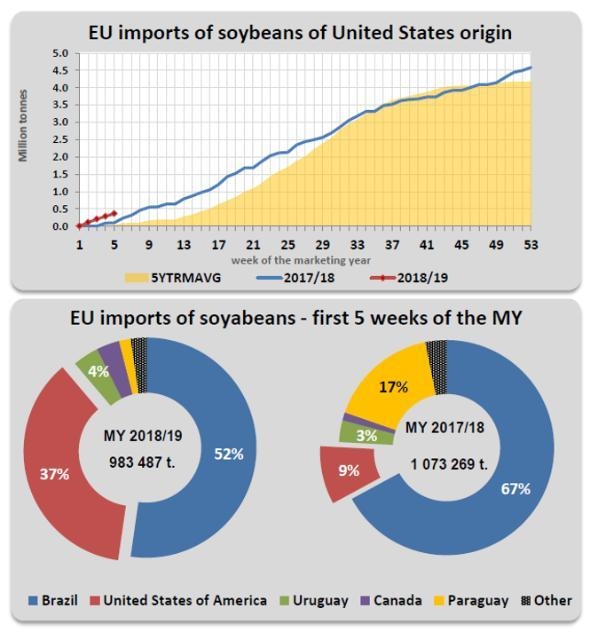Follow-up to the EU-U.S. Joint Statement of 25 July: Imports of U.S. soybeans increase by over 280%
President Juncker has now put in place a bi-monthly reporting mechanism on the evolution of trade in soybeans from the U.S. to the EU. This is the first concrete follow-up to the EU-U.S. Joint Statement agreed in Washington between Commission President Juncker and U.S. President Trump.
“The European Union can import more soybeans from the U.S. and this is happening as we speak,” President Juncker said today. “This is a win-win situation for European and American citizens.”
Commissioner for Agriculture, Phil Hogan, said: “The European Union and the United States have been longstanding partners and there is room to further strengthen our trade relationship. We expressed our willingness to import more soybeans from the United States and this is already happening. European and American farmers have much to gain by working together.”
In their Joint Statement of 25 July, President Juncker and President Trump agreed that while future cooperation on trade will not include agriculture as such, the EU and U.S. would work to increase trade in soybeans. The current figures show that imports of U.S. soybeans to the EU have been increasing:
- Compared to July 2017, EU imports of soybeans from the United States are currently up by 283% at 360,000 tonnes;
- In terms of the EU’s total imports of soybeans the U.S. share is now at 37%, compared to 9% in July 2017;
- Imports of soymeal, which are traditionally lower with regards to the U.S., are also on the rise – 185,000 tonnes were imported in July 2018, an increase of 3,337% compared with July 2017;
- The U.S. is now supplying 13% of EU soymeal imports compared to 0.3% in July 2017.
The EU needs soya in Europe as a source of protein to feed our animals, including chicken, pigs and cattle, as well as for milk production. The EU currently imports about 30 million tonnes per year because it cannot produce sufficient quantities. U.S. prices for both soybeans and soymeal are currently the most competitive on the market and therefore a very attractive feed option for European importers and users.
Background
Today’s report is the first of what will be bi-monthly contributions by the Commission to the Executive Working Group set up by Presidents Juncker and Trump at their meeting in Washington on 25 July. The Executive Working Group has started its work this week, with senior advisers of President Juncker and President Trump being in regular contact to scope how to best implement the Joint Statement. EU Trade Commissioner Cecilia Malmström is leading the work on the EU side and will report back regularly about it to the EU Council of Ministers and to the European Parliament.
Bi-monthly reporting on EU imports of soybeans will include information on the volume of imports from the U.S., the share of U.S. soybeans in total imports, changes in the U.S. share, and price movements.
The data included in the report published today on soybeans, comes from the Crops Market Observatory which the European Commission launched in July 2017 to share market data and short-term analysis to ensure more transparency.
For more information
Annex
